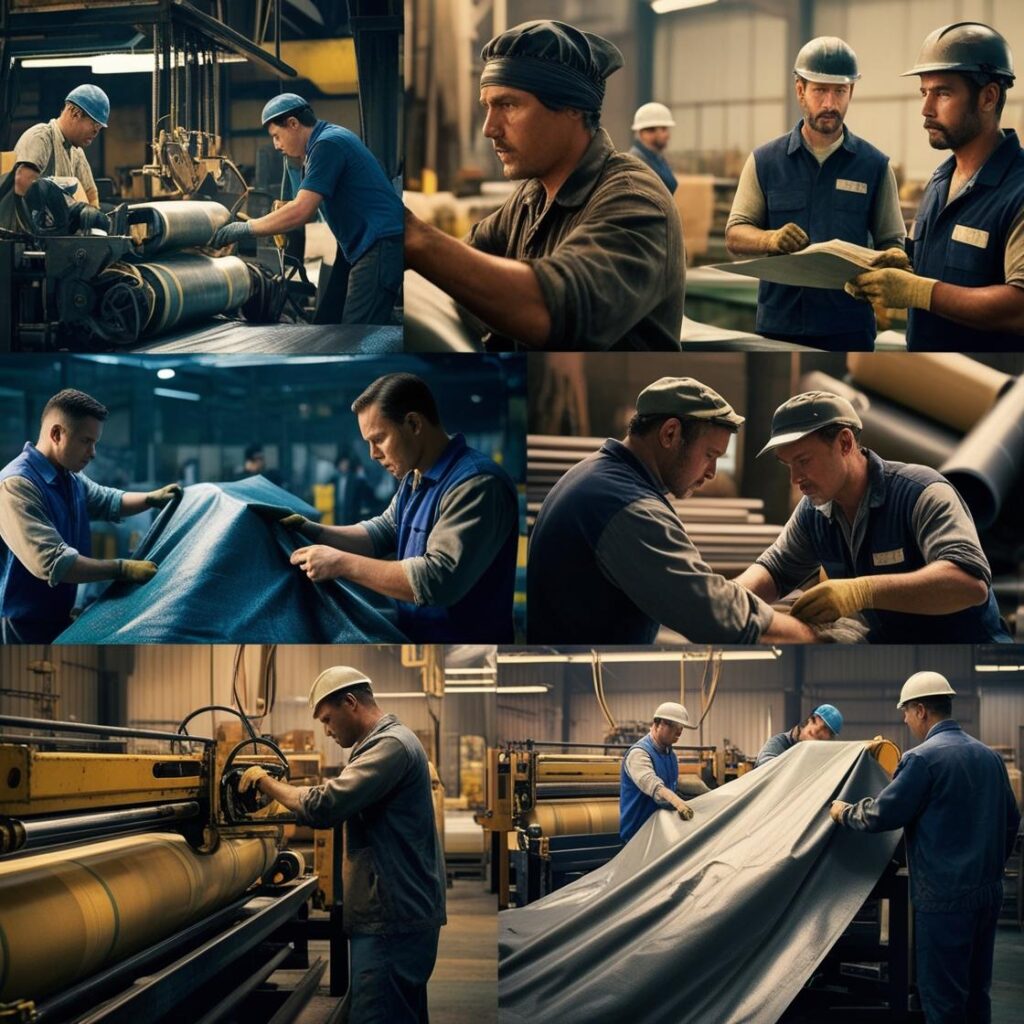- By admin
- Uncategorized
- 0 Comment

Manufacturers produce tarpaulins through a series of precise steps, using advanced technology to ensure durability, waterproofing, and weather resistance. From raw material selection to final lamination and finishing, each stage plays a crucial role in creating high-quality tarpaulins.
Step-by-Step Tarpaulin Manufacturing Process
1. Selecting Raw Materials
Manufacturers primarily use polyethylene (PE) or polyvinyl chloride (PVC) to produce tarpaulins.
- They choose HDPE (High-Density Polyethylene) or LDPE (Low-Density Polyethylene) for lightweight yet durable tarpaulins.
- For industrial applications, they prefer PVC tarpaulins due to their superior strength and flexibility.
2. Extruding & Weaving Fabric
- The production process begins by melting and extruding the selected polymer into fine threads.
- High-speed weaving machines interlace these threads to create a strong fabric base with high tensile strength.
3. Coating & Laminating
- Manufacturers apply LDPE or PVC coatings to the woven fabric, making it waterproof, UV-resistant, and durable.
- Some high-performance tarpaulins receive double or triple-layer lamination for extra protection.
- To enhance functionality, they may add fire-retardant, anti-fungal, and anti-static coatings based on specific industry needs.
4. Cutting & Heat Sealing
- Automated cutting machines trim the laminated sheets to the required sizes.
- To reinforce the edges, manufacturers use heat sealing or high-frequency welding, ensuring better strength and tear resistance.
5. Installing Eyelets & Finishing
- Machines punch metal or plastic grommets (eyelets) into the edges at regular intervals, allowing easy fastening.
- They add reinforced hems and ropes to increase durability and usability.
6. Quality Control & Packaging
- Before shipping, manufacturers conduct strict quality tests to check waterproofing, tear resistance, UV protection, and overall strength.
- Once approved, they fold, pack, and distribute the tarpaulins to suppliers and customers.
Conclusion
How Tarpaulin is Manufactured? Tarpaulin production relies on advanced technology to ensure strength, flexibility, and long-term durability. By choosing high-quality reinforced and laminated tarpaulins, businesses and individuals can benefit from reliable, all-weather protection for industrial, agricultural, and commercial use. Tarpaulin is manufactured to achieve the best performance, investing in well-engineered, high-performance tarpaulin materials is essential. Check the best Camping Chairs here…
